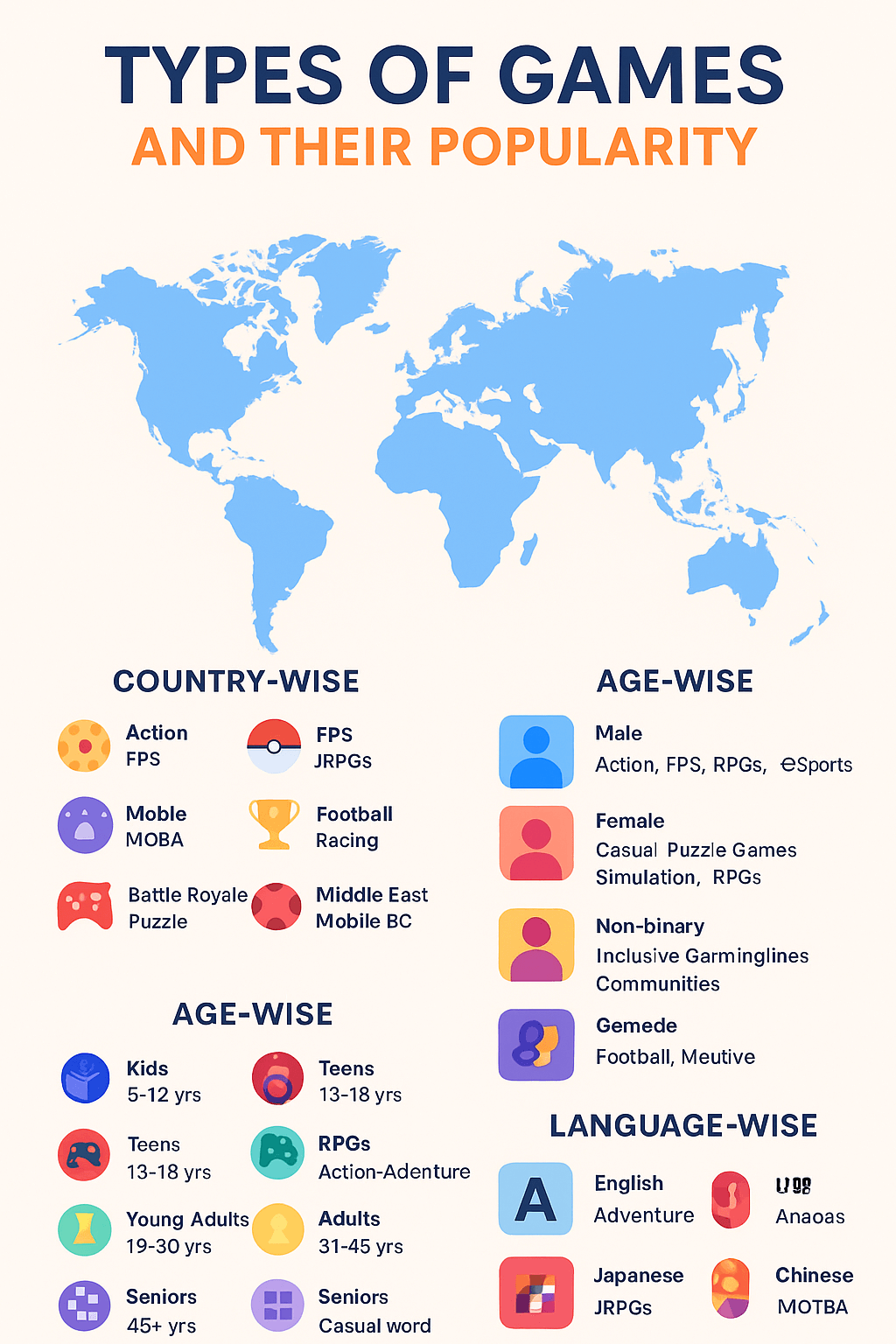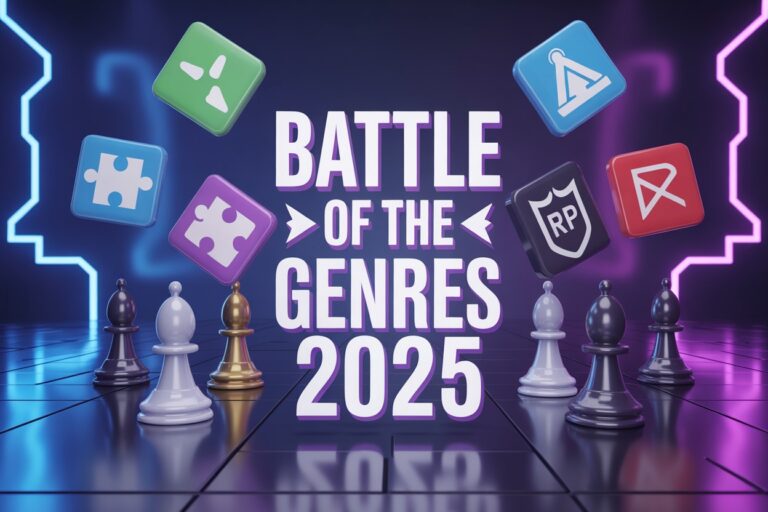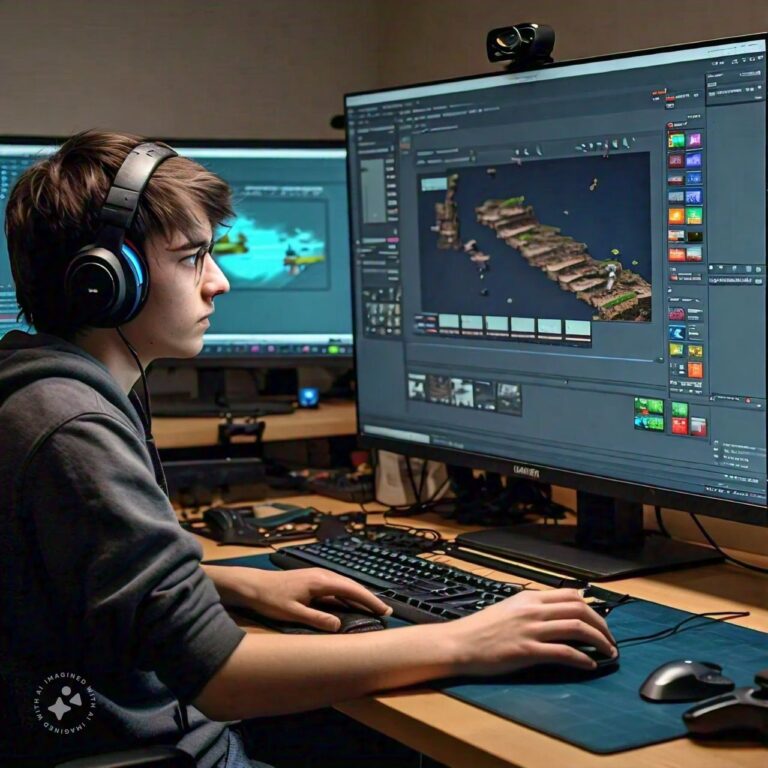The global gaming industry has grown into a $200+ billion market in 2025, driven by diverse game genres and player preferences. However, not all games are equally popular across the world. Different countries, age groups, genders, and even languages influence which types of games rise to the top. Understanding these variations is crucial for game developers, marketers, and investors aiming to capture the right audience.
In this blog, we’ll break down how game preferences differ country-wise, age-wise, gender-wise, and language-wise, giving you a complete picture of the modern gaming landscape.

1. Game Types Popular Country-Wise
Each country has unique cultural influences and technology adoption that shape its gaming preferences:
- United States → Action, FPS (Call of Duty, Fortnite), and Sports games (NBA, Madden).
- Japan → RPGs, JRPGs (Final Fantasy, Pokémon), and handheld/mobile games.
- China → Mobile MOBAs (Honor of Kings, PUBG Mobile), MMORPGs, and strategy games.
- India → Battle Royale (BGMI, Free Fire), casual puzzle games, and cricket-based sports games.
- South Korea → eSports titles like StarCraft, League of Legends, and MMORPGs.
- Europe → Football (FIFA, eFootball), racing simulators, and story-driven adventure games.
- Middle East → Mobile battle royale, racing, and social multiplayer titles.
2. Game Types Popular Age-Wise
- Kids (5–12 years) → Educational games, Minecraft, Roblox, and casual puzzle apps.
- Teens (13–18 years) → Battle Royale (Fortnite, Free Fire), sports games, and competitive multiplayer titles.
- Young Adults (19–30 years) → RPGs, action-adventure, eSports, and MMORPGs.
- Adults (31–45 years) → Strategy games, story-driven single-player games, and casual mobile titles.
- Seniors (45+ years) → Casual word games, Sudoku, card games, and simple mobile puzzles.
3. Game Types Popular Gender-Wise
- Male Players → Action, FPS, RPGs, and eSports titles dominate.
- Female Players → Casual puzzle games, simulation (The Sims, Animal Crossing), RPGs, and mobile social games.
- Non-binary & Inclusive Gaming Communities → Narrative-driven adventures, simulation games, and indie titles with strong storytelling & customization.
(Note: Gender preferences are becoming less rigid as inclusivity in gaming grows.)
4. Game Types Popular Language-Wise
- English-speaking regions → Action-adventure, FPS, sports games.
- Japanese → JRPGs, anime-inspired games, visual novels.
- Chinese → MMORPGs, mobile MOBAs, strategy titles.
- Spanish/Latin America → Football games, action, and mobile battle royale.
- Arabic → Mobile competitive games, racing, and social multiplayer.
- German/French → Simulation (Euro Truck Simulator, Farming Simulator), RPGs, and adventure games.
Gaming is truly a global language, but its expression varies by region, age, gender, and culture. Developers aiming for success must adapt their game genre, monetization model, and localization strategy to match these diverse preferences.
The future of gaming lies in hybrid genres, cross-platform play, and AI-driven personalization, ensuring that no matter where you are in the world, there’s a game tailored just for you.







